Restoration work on the Notre-Dame de Paris Cathedral takes another step forward with the completion of the new logs, the solid wood supports intended to support and allow the movement of the two bells of the south tower. The announcement was made June 26 by theétablissement public Rebâtir Notre-Dame de Paris, responsible for the reconstruction of the French capital’s iconic building after the 2019 fire.
“This visit illustrates the extent and variety of restorations that, beyond the damage caused by the fire, allow Notre-Dame de Paris to withstand the effects of time and continue to amaze us,” said Philippe Jost, president of the public institution Rebuilding Notre-Dame de Paris. “Thanks to the talent and expertise of the bell ringers, we discover today the new bell strain that the Emmanuel Grand bell will soon receive to return to accompany Catholic worship and major national events. I thank the many donors who make this progress possible. We see here that Notre-Dame de Paris continues to need our generosity to receive, in all its components, the care it needs.”
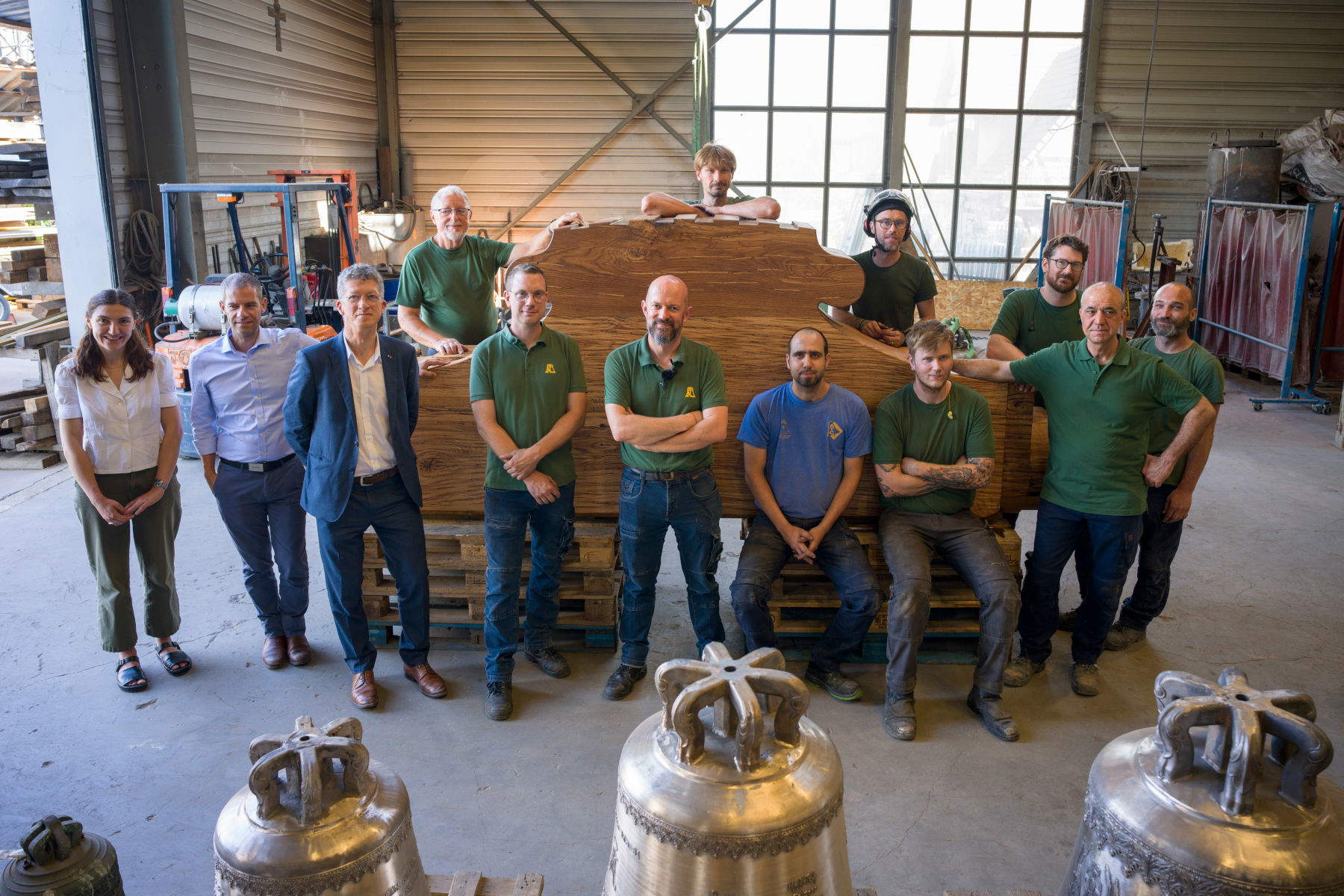
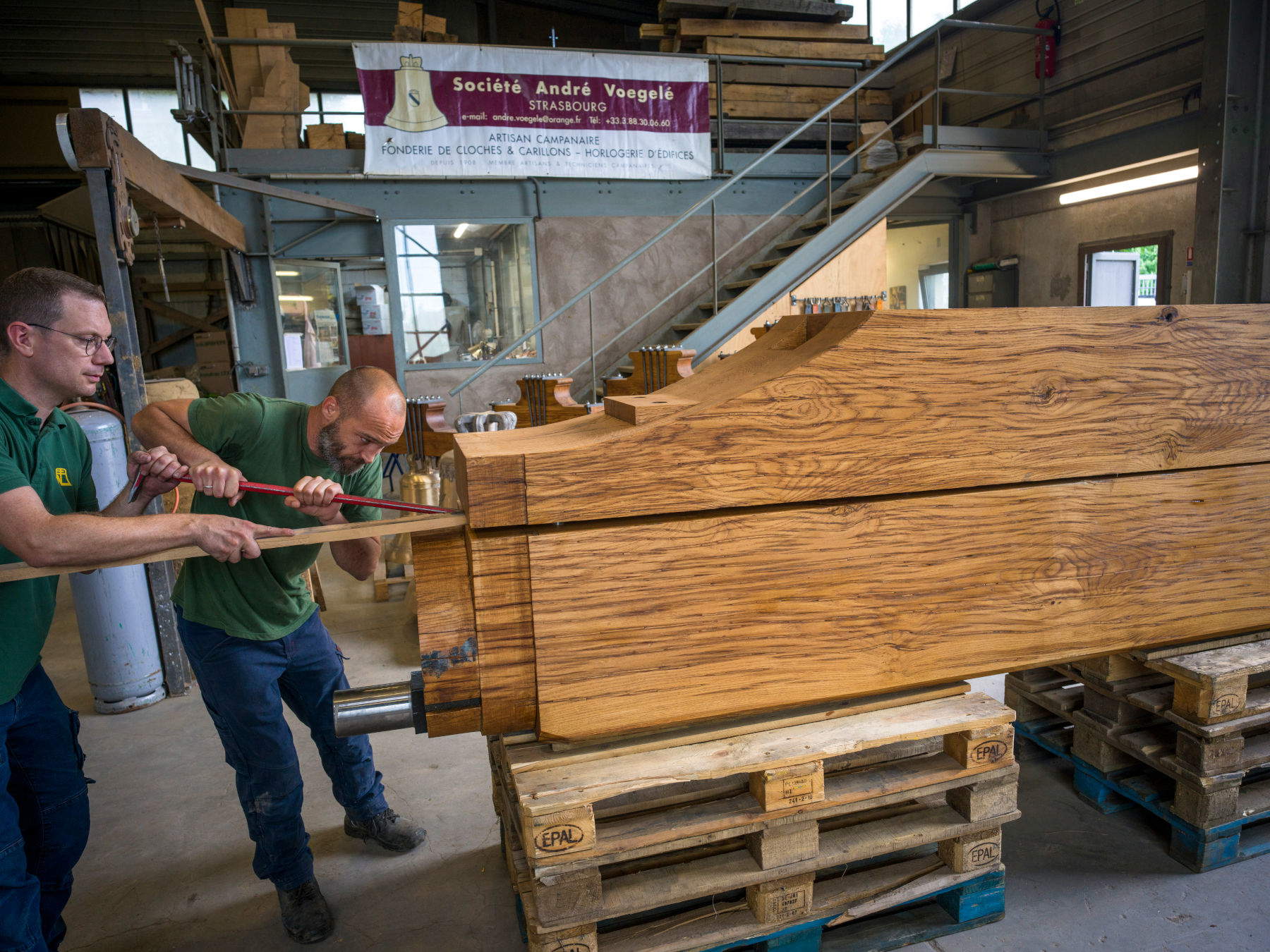
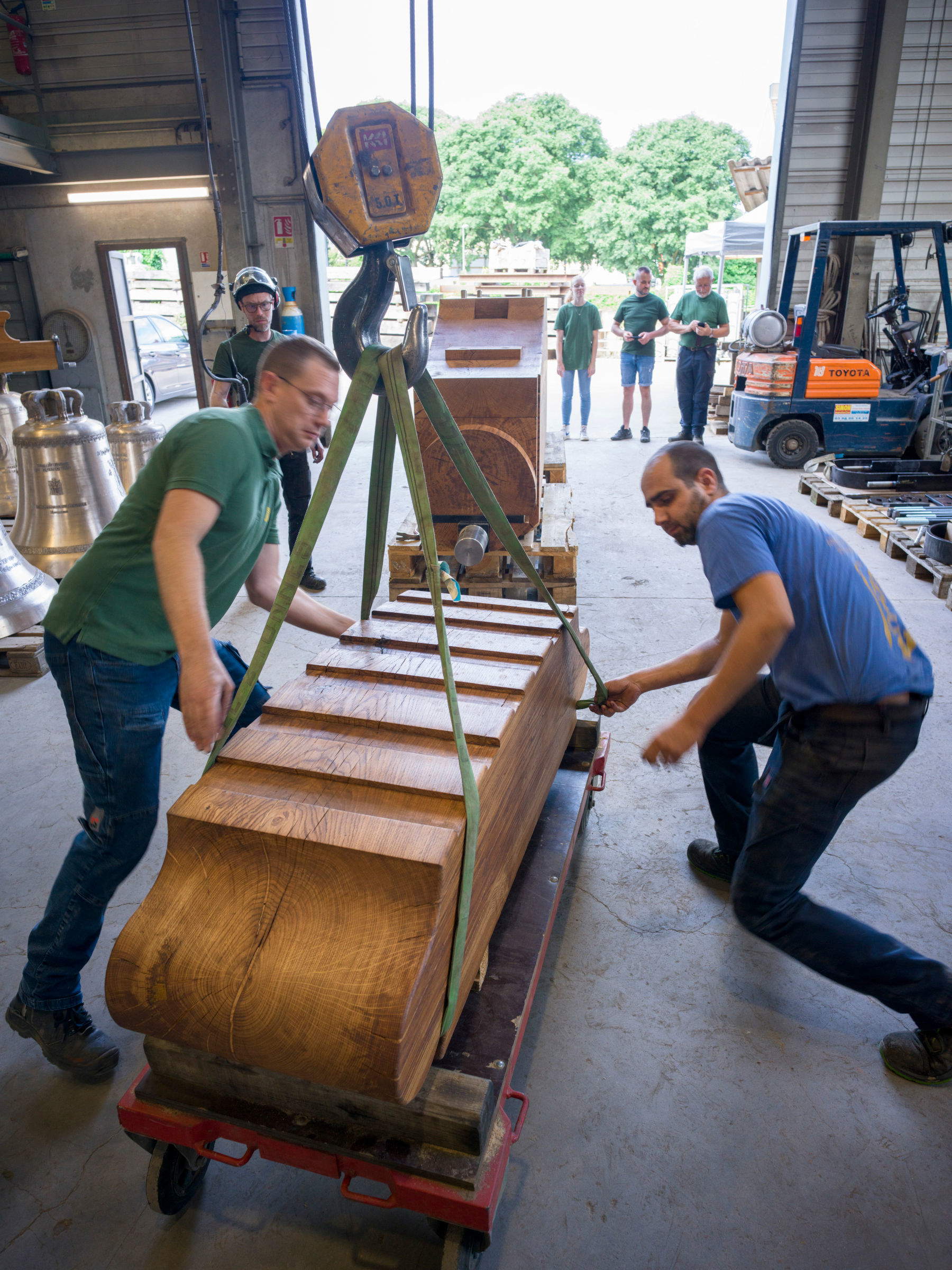
Located at a height of about 60 meters, the bell chamber houses two large bronzes: the Emmanuel bell, dating from 1686 and weighing 13.3 tons, and the Marie bell, added in 2013 to celebrate the 850th anniversary of the cathedral, weighing 6.2 tons. The logs are the wooden structures that enable these instruments to ring with momentum: an action that involves swinging the bell and striking it through the clapper. Their dimensions, in proportion to the weight they must support, are imposing. For the Emmanuel bell, the log measures 1.30 meters in height, 3.30 meters in length, with a section of 50x50 centimeters. In contrast, the log of the Marie bell reaches a height of about 1 meter, a length of 3.20 meters, and a section of 38x44 centimeters.
Although the south bell tower was not directly damaged by the fire, a thorough examination revealed structural fragilities in the original supports, necessitating their complete replacement. The intervention was facilitated by the presence of the current construction site in the western massif of the cathedral. The design and construction of the new logs required a synergy of specialized technical and craftsmanship skills. After a call for tenders concluded in March 2025, the task was awarded by the établissement public to a grouping of seven small and medium-sized craft firms belonging to the ATC (Artisans et Techniciens Campanaires) network, under the leadership of the firm Gougeon (Indre-et-Loire). The group also includes Brouillet et fils (Corrèze), Frotey (Haute-Saône), André Voegele (Bas-Rhin), Chomel Dard (Allier), Paschal (Pas-de-Calais) and l’Atelier du Temps (Hautes-Pyrénées). The project is based on studies carried out by the chief architects of historic monuments, with the support of bell heritage expert Hervé Gouriou.
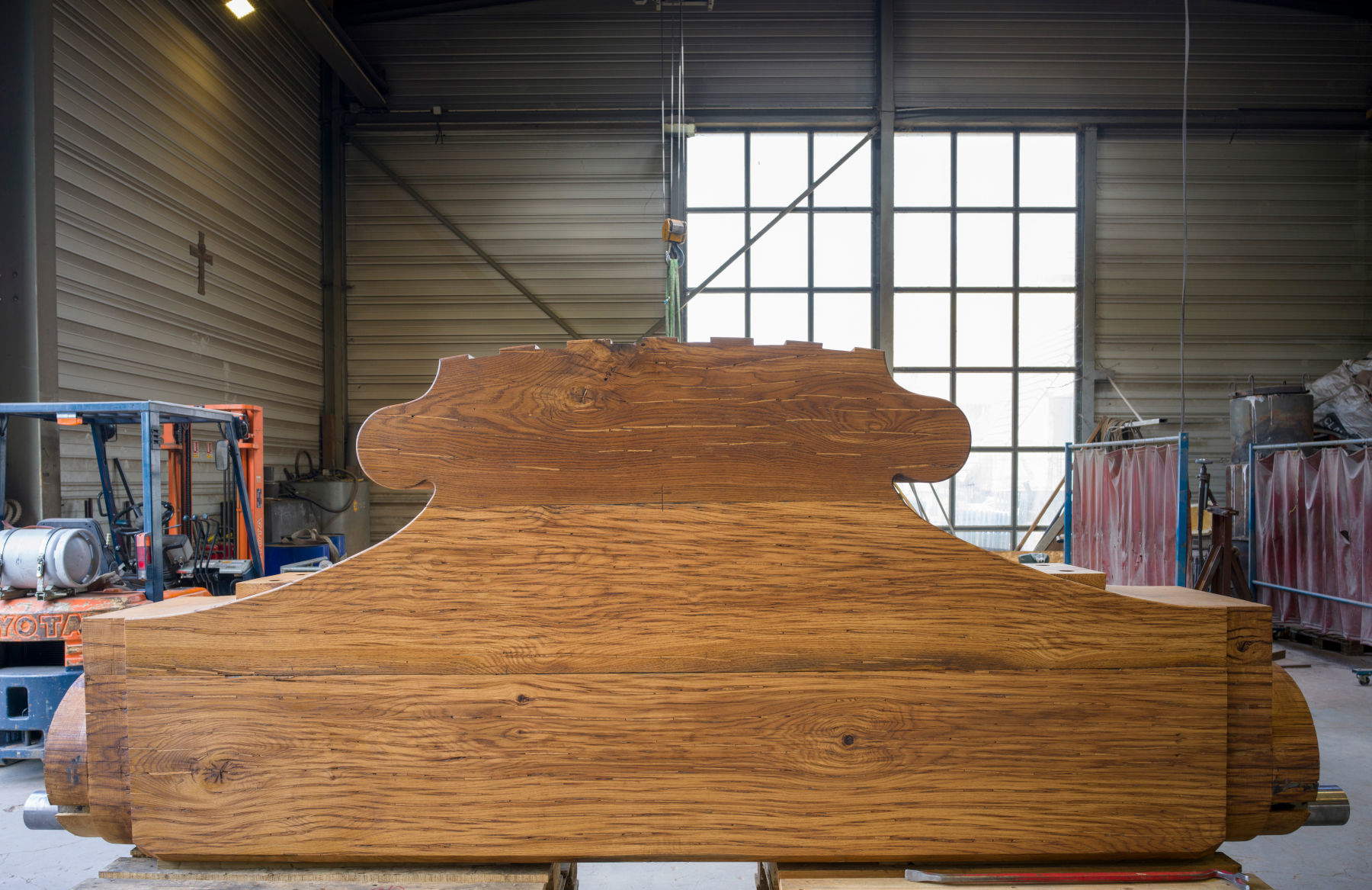

The production of the logs took place at the workshops of Société Voegele Artisans Campanaires de l’Est in Strasbourg. Nine craftsmen specializing in carpentry, mechanics, and metalwork spent about 70 hours on design and 500 hours on fabrication. The fabrication phase included a series of complex operations: from preliminary cutting of the rough beams, to identifying the reference points on each component, to shaping, carving, sanding, and treatment with linseed oil. The beams used, made of solid oak, had been sawn between 10 and 15 years ago and measured between 8 and 9 meters in length, with sections between 50 and 60 centimeters.
In parallel with the fabrication of the wooden parts, the hardware elements were also produced in the workshop: axles, suspension brackets, bolts, ball bearings, and mounting bases. Dry assembly carried out in June allowed the precision of the joints to be verified according to the rules of bell tradition. Once completed, each log was disassembled, transported and reassembled inside the cathedral’s south tower. The completion of the work is part of the overall timetable of work that will lead to the reopening of the tour circuit of the towers, expected by the end of the year and managed by the Centre des monuments nationaux (CMN). The momentum of the two bells will be made possible precisely because of the new strains, designed and built to ensure stability, durability and full acoustic functionality.
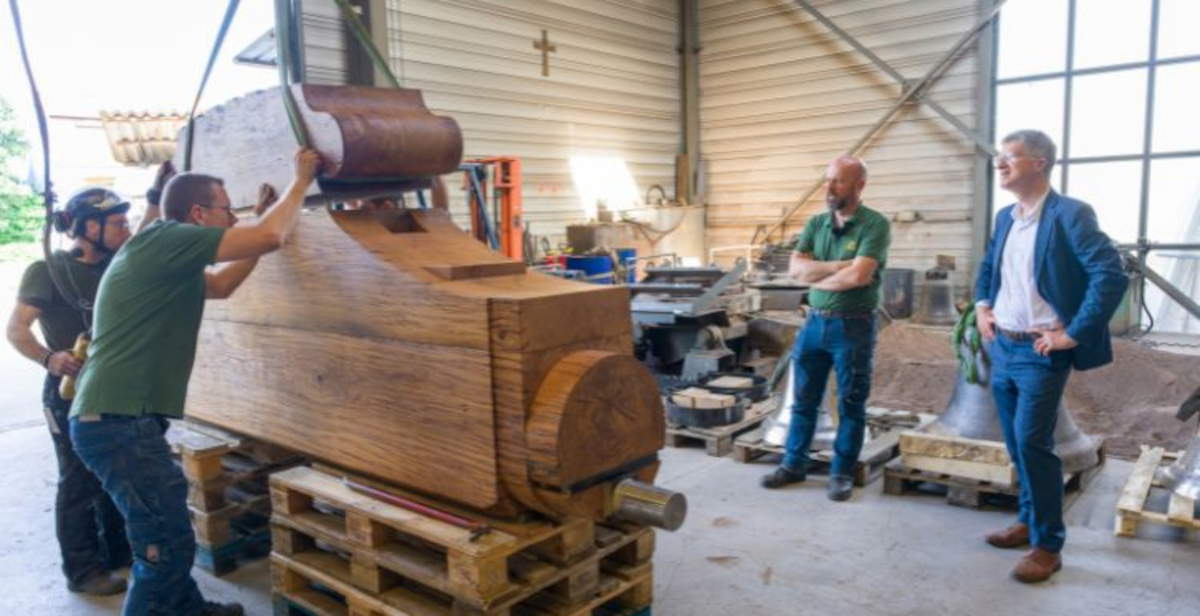 |
| Notre-Dame: new bell supports for the south tower bells completed |
Warning: the translation into English of the original Italian article was created using automatic tools. We undertake to review all articles, but we do not guarantee the total absence of inaccuracies in the translation due to the program. You can find the original by clicking on the ITA button. If you find any mistake,please contact us.